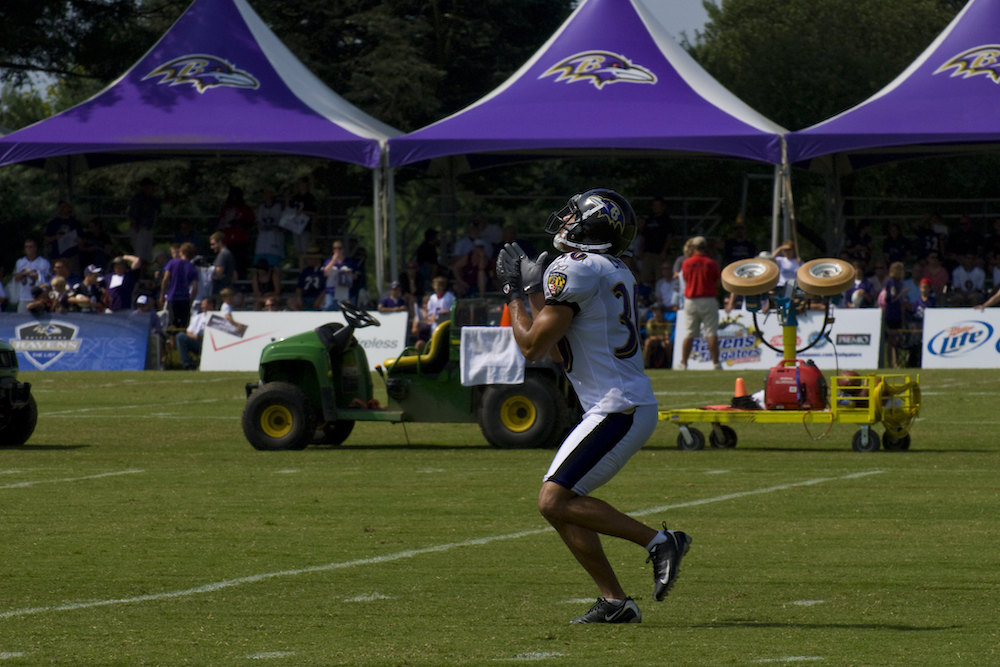Arlington, Va. — I started playing football at eight years old. Back then, if you fell and hit your head, the coach would ask if you were all right and to shake it off, and then you went back out on the field. There wasn’t a protocol to check if you had a concussion or possible brain injury.
I went on to play college football, and after graduation, I played in my first NFL season in 2005. In 2010, I attended a brain-trauma workshop at the NFL Players Association’s annual conference in Florida. A doctor compared images of a healthy adult human brain and a 32-year-old NFL veteran’s brain. The comparison terrified me. I never thought about the possibilities of brain injuries from football until that moment—after five NFL seasons, four years of college football, and countless games throughout my childhood and into my adolescence.
Now that I’m a parent of three, I’m very mindful of sports and head injuries and believe it is important for other parents to see the whole picture when deciding whether to allow their children to play tackle football. Most parents worry about general injuries rather than head trauma, and some parents may even believe that brain-injury concerns are overblown. But the risk is real. I’ve spoken to teenagers and young adults who cannot function without assistance due to football-related brain injuries. I’ve talked to former NFL players about their brain injuries—some have told me that they sometimes forget where they live and how they suddenly become irritable.
I share what I’ve learned about the possibilities of sports-related brain injuries, so parents are aware of the dangers of contact sports and that proper recovery from a head injury requires more than a mere “shake it off.”
As a board member of Brain Injury Services—a nonprofit located in Northern Virginia that supports people with traumatic brain injuries (TBIs)—I had a chance to learn some clear guidelines on what parents of children should know about head injuries from Dr. Gregory J. O’Shanick, President & Medical Director of the Center for Neurorehabilitation Services, PC and Medical Director Emeritus of the Brain Injury Association of America. Keep in mind that we both agree that contact sports are for children ages 14 and older.
- On the field, parents and coaches should be aware of any physical or direct hit to the head or whiplash motion as a cause of a concussion or head injury. Parents also need to consider all head injuries that can occur off the field. For example, if the teenager is involved in a biking or skateboarding accident and sustains a head injury, they should stay off the field until they fully recover from that injury.
- Seek emergency assistance or call 911 if the child is experiencing seizures, numbness or clumsiness, repetitive vomiting, slurred speech, drowsiness, pupils unequal in size, or immediate memory loss or confusion.
- It takes, at minimum, two weeks to recover from a head injury. During this time, parents should look for and seek medical attention for symptoms such as headaches, fatigue, sensitivity to light and sound, blurred vision, dizziness, poor sleep, reduced immediate memory, reduced ability to process thoughts, poor judgment, anxiety, agitation, significant change in behavior and change of appetite.
- A young adult’s primary job is to be a student first and then an athlete. If the student cannot maintain their schoolwork, concentration, or cognitive activities for 30 minutes without accommodations such as breaks, extra time for exams, or quieter spaces to concentrate, they should continue to remain off the field. They must have a completely normal return to learn status before they can begin a return to play protocol.
- Proper rest to normalize sleep, hydration, and healthy nutrition are vital in recovering from a head injury.
Dr. O’Shanick also recommends that students ease back into their sport by taking these steps:
- First, they should participate in academic activities without accommodations or as they did before the injury.
- Next, parents should increase social connection to monitor for irritability or other symptoms that indicate that the head trauma needs more recovery time.
- Finally, parents or coaches should slowly introduce cardio exercises that increase the heart rate. For some, increased heart rates can cause symptoms from a head injury to worsen. Fortunately, school systems—including LCPS—have established protocols for these that include the steps each student athlete needs to achieve to a safe return to play.
The goal is to take the extra time and precaution to allow the brain to heal. Then, if teenagers responsibly and thoroughly recover from a concussion, they can continue to successfully play in a sports program in high school and beyond.







